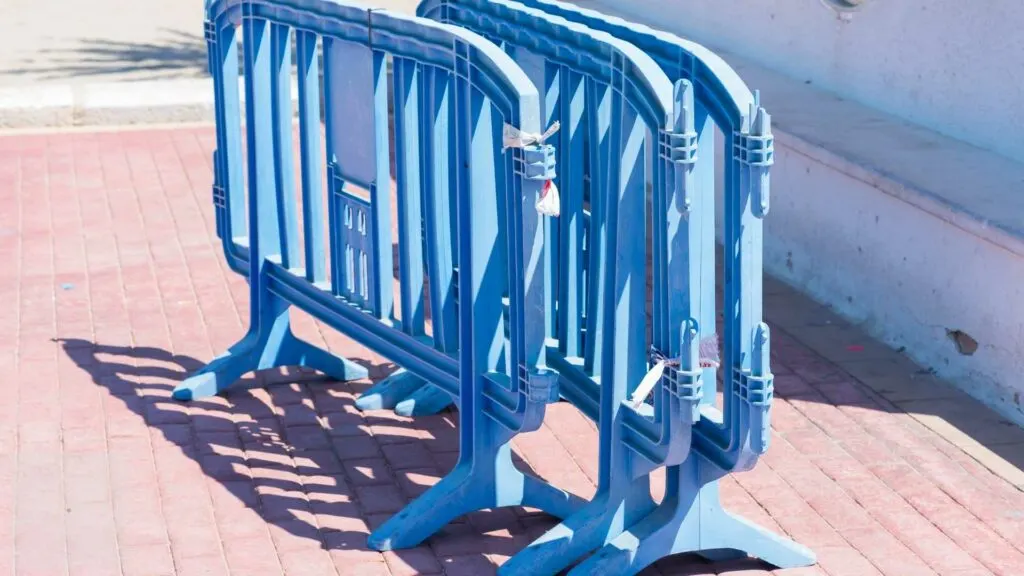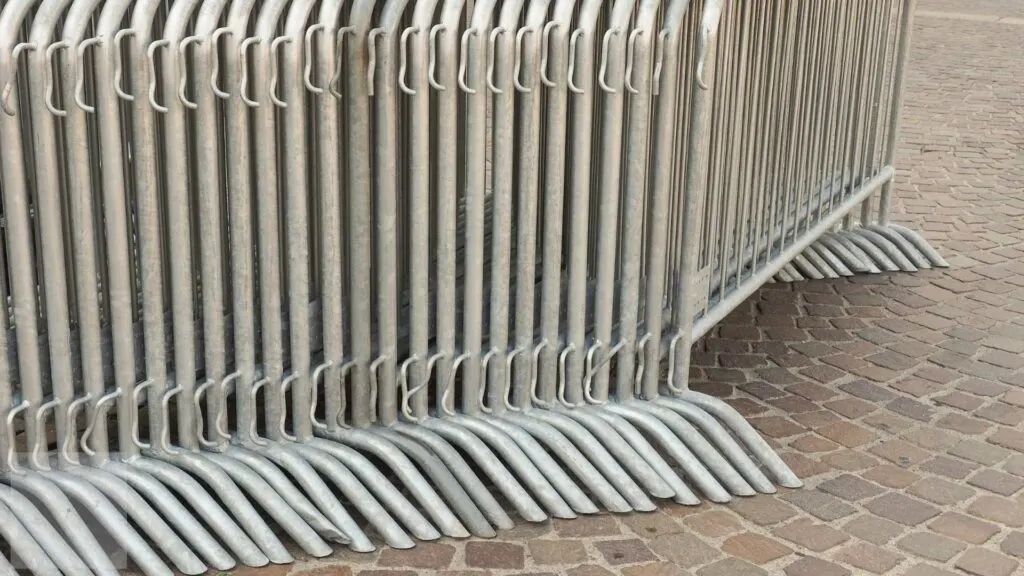When organizing an event outdoors, it is crucial that all the tick boxes are checked off.
- Decoration check, done!
- Food check, done!
- Security?
Well… that could be something that most of the events miss. Certainly, you wouldn’t want any uninvited guests, whether people or stray animals, to interrupt your party. Security is an important aspect in various occasions, such as events and constructions.
This can be enhanced through temporary boundaries like fences, which are only required temporarily.
Fences prevent uninvited people from getting access to restricted areas, safeguard objects, and ensure discipline.
However, since temporary fencing is often installed for a short period, it is crucial to configure it correctly to meet the intended objectives. Here is how you can do it:

1. Choosing the Wrong Type of Fence
The first step in ensuring the security of your events is deciding on the correct type of temporary fencing to use. It is important to note that not all fences are the same and that various situations call for the installation of a particular type of fence. Partnering with a trusted provider like Dallas Fence can help you select and install the ideal fencing solution tailored to your specific needs.
For instance, construction sites physically require strong, anti-climb panels while, at times, physically low, easy-to erect temporary fencing panel could befit music concert sites.
Evaluating the needs of your site and determining which kind of fence to install is critical to avoiding problems and security threats for your event.
2. Neglecting Site Preparation
Another potential issue that a lot of people make when putting up temporary fences relates to the lack of site preparation.
This entails removing any obstacle, such as stones, stumps, or any other item that may hinder the fence’s installation.
These also involve a survey of the area to check for utility lines that can interfere with the fence’s installation.
Good ground preparations allow for proper fixing of the fencing panels and prevent any panels from falling due to poor foundation.
3. Improper Panel Spacing
Another issue that should be considered is the gaps present between fencing panels. Lack of proper spacing implies that there will be areas where individuals not allowed entry will find it easy to squeeze themselves in.
To avoid this, it is advised that the panels be installed close to each other and that their connectors or couplers are properly tightened.
Uniformity and stability in the spacing of these panels will go a long way in adding more stability to the fence.
4. Inadequate Support and Stabilization
Fencing panels are delicate structures and must be firmly anchored and braced to withstand such forces as wind and other interference.
If the panels are not well supported, there is a high chance that they will fall and pose a tremendous danger to the public.
When it comes to areas usually experiencing strong winds, it is always helpful to anchor the panels with weights, sandbags, or additional stiffeners to provide the necessary support needed to maintain the panels upright.

6. Overlooking Access Points
Gateways are the most vital aspects of temporary fences since the fencing can only work if these aspects are well-planned. Make sure that your fencing has entry points that only allow the guests and workers to enter.
It is operationally disadvantageous and may pose security risks if structures such as gates or entrances are not in place to accommodate authorized personnel.
Ensure that these areas are well locked or guarded to prevent people from gaining entry when they are not supposed to.
7. Not Conducting Regular Inspections
Regular inspections are essential to ensure the integrity of the temporary fencing once it has been erected.
The fencing may eventually be compromised by environmental conditions, vandalism, and normal wear and tear.
It is possible to detect and address problems regularly, preventing them from worsening.
Your fencing will continue to function effectively for its use thanks to this proactive approach.
8. Failing to Properly Anchor Fence Bases
Appropriately anchoring the fence bases is an often neglected part of temporary fencing. Fence panels can move or fall over if not securely anchored, especially in locations with heavy traffic or bad weather.
Suitable anchoring techniques, such as concrete blocks, ground stakes, or weighted bases, can ensure the fence stays sturdy and erect.
Ensuring the security and integrity of the overall fence structure depends on having bases that are properly grounded.
8 Common Temporary Fencing Installation Mistakes to Avoid
Planning and paying close attention to details are essential when installing temporary fence panels to prevent frequent errors that might jeopardize efficiency and security.
You must choose a temporary fencing system that is both safe and useful by keeping certain factors in mind.
These range from selecting the appropriate fence to doing routine inspections and anchoring them.
By avoiding these frequent blunders, you can also improve security and feel more at ease knowing that your event is secure.

Jessi is the creative mind behind The Coffee Mom, a popular blog that combines parenting advice, travel tips, and a love for all things Disney. As a trusted Disney influencer and passionate storyteller, Jessi’s authentic insights and relatable content resonate with readers worldwide.
